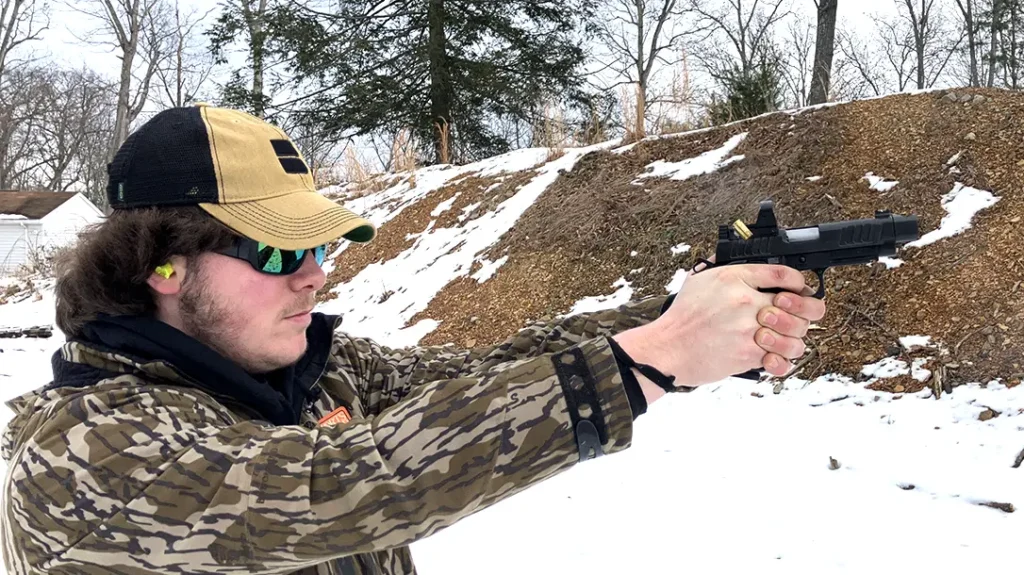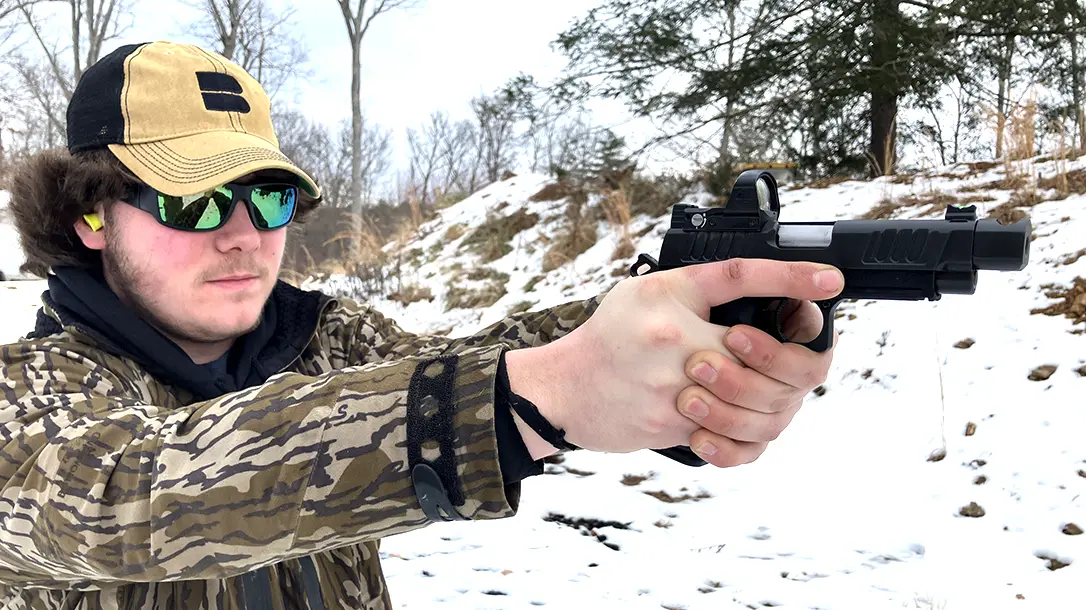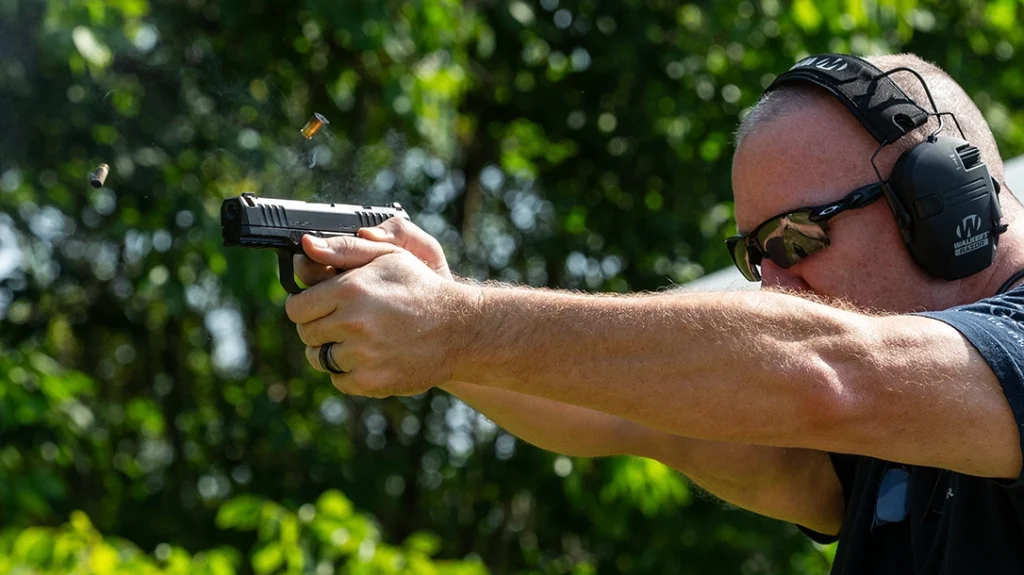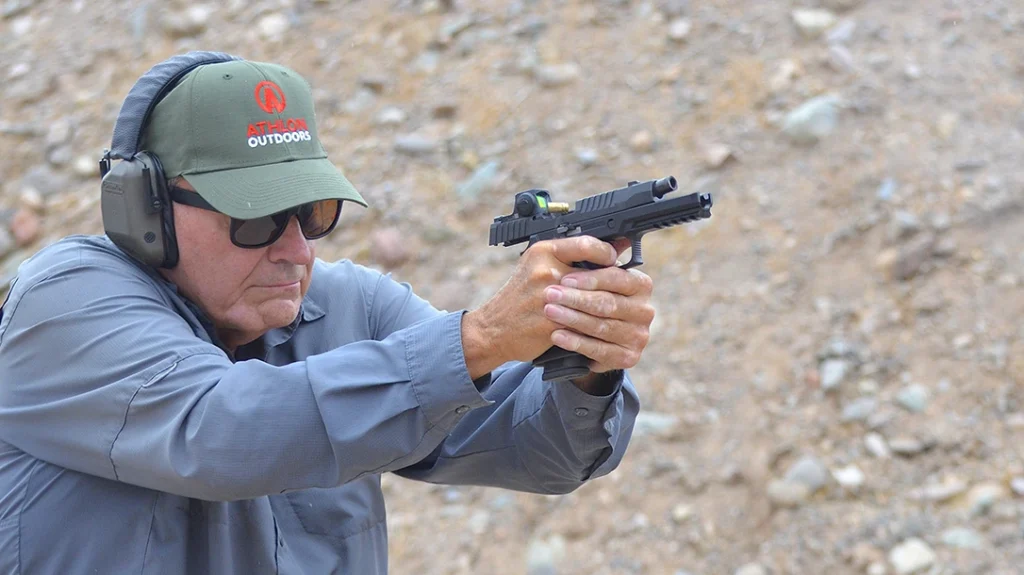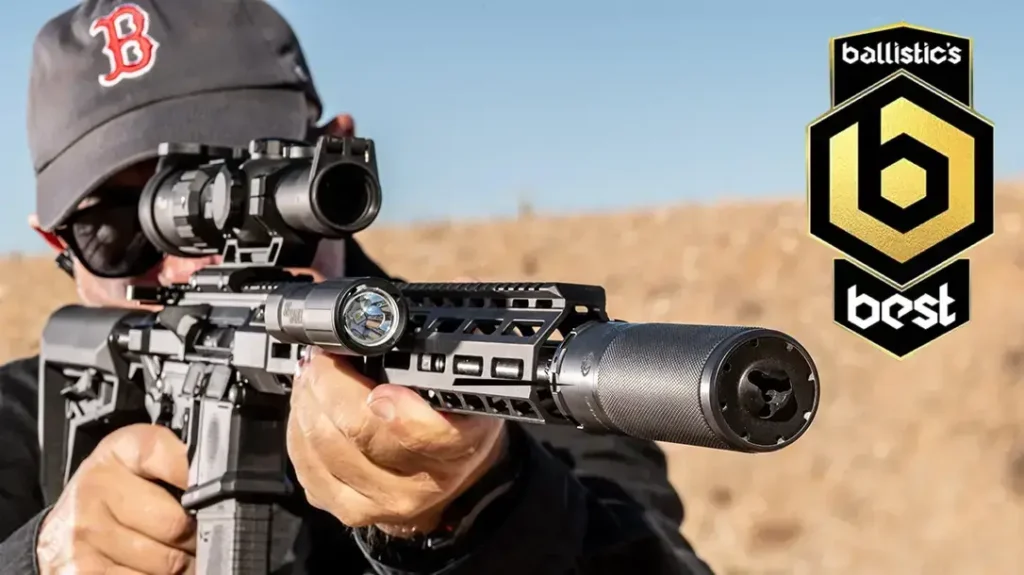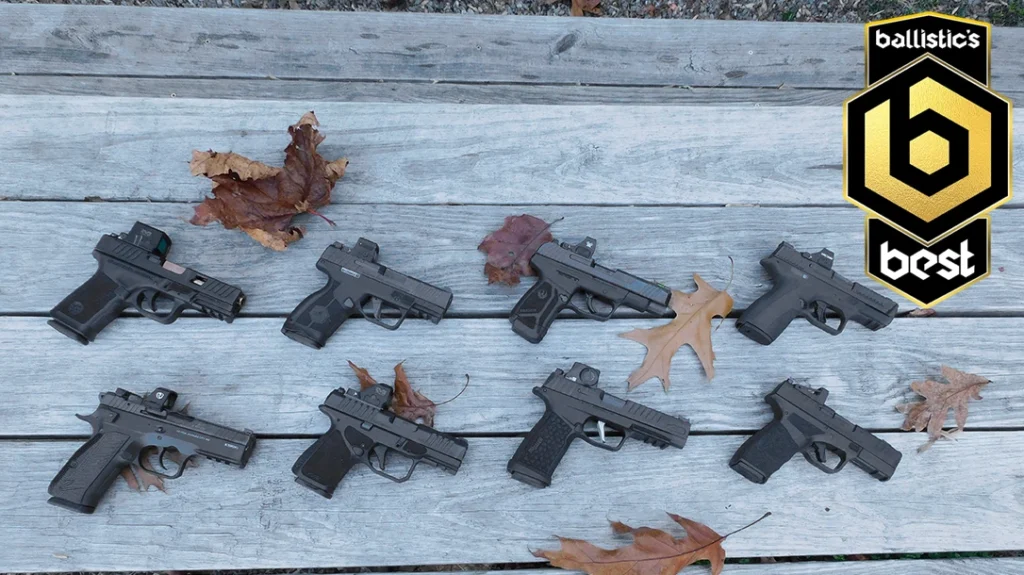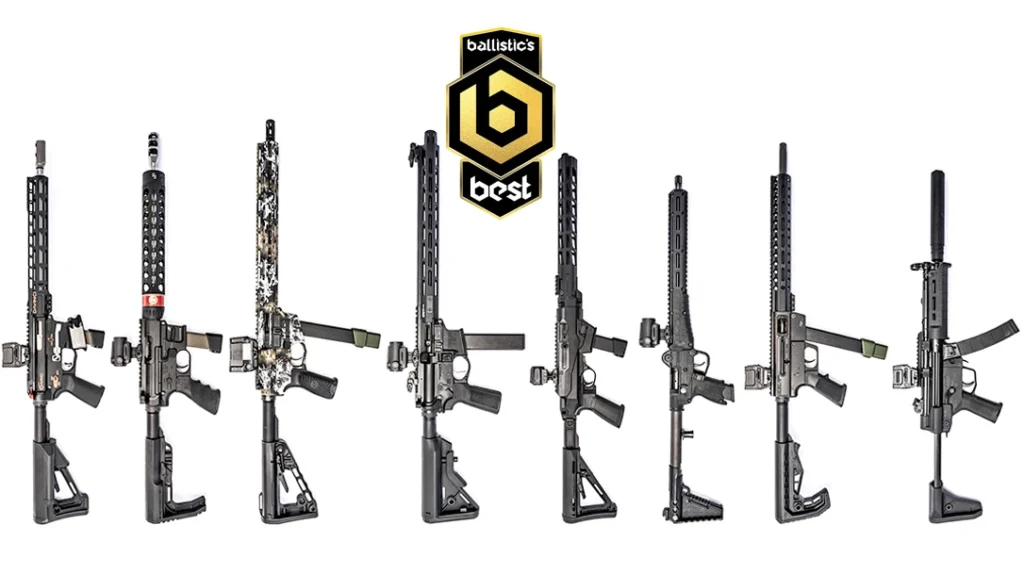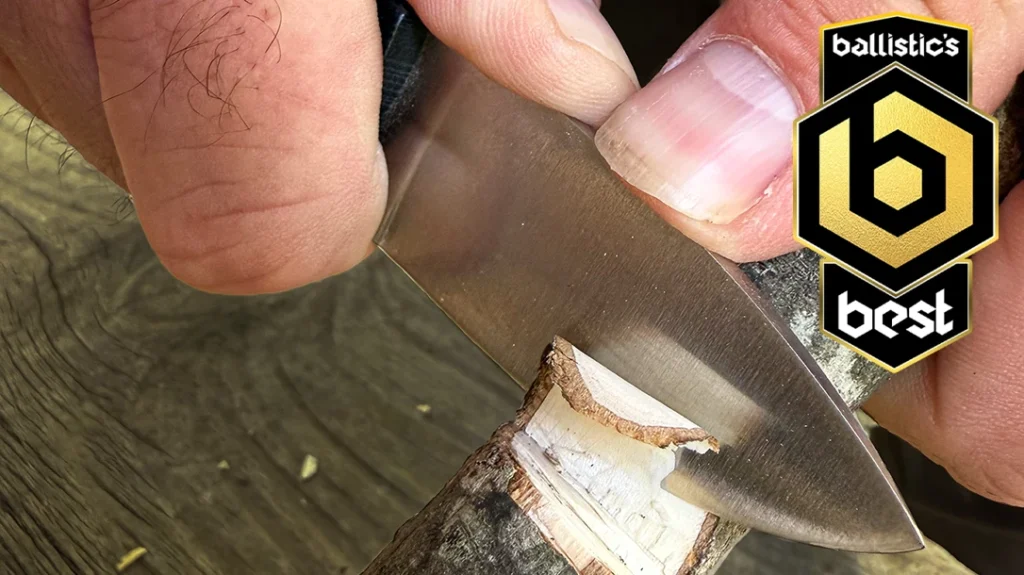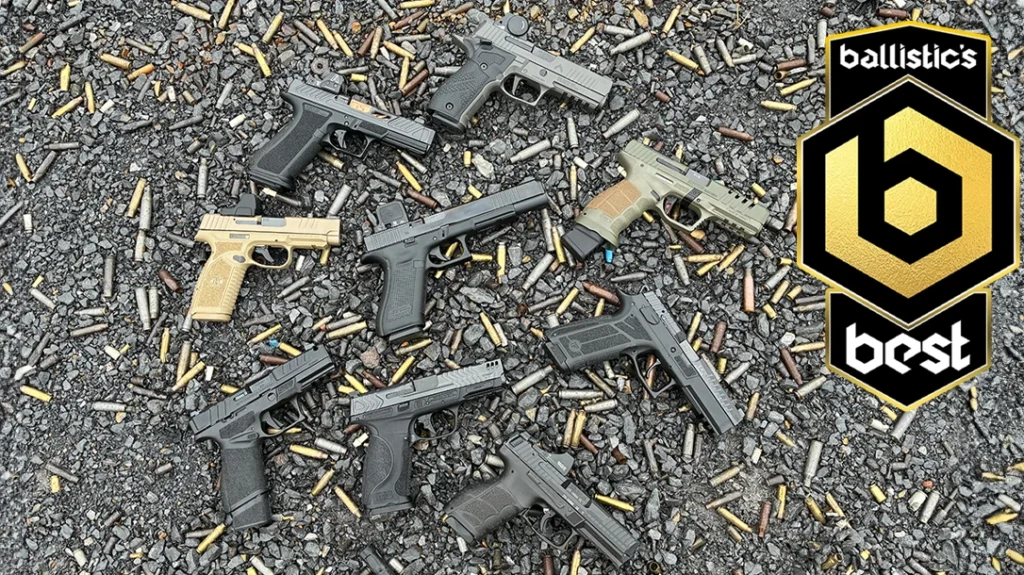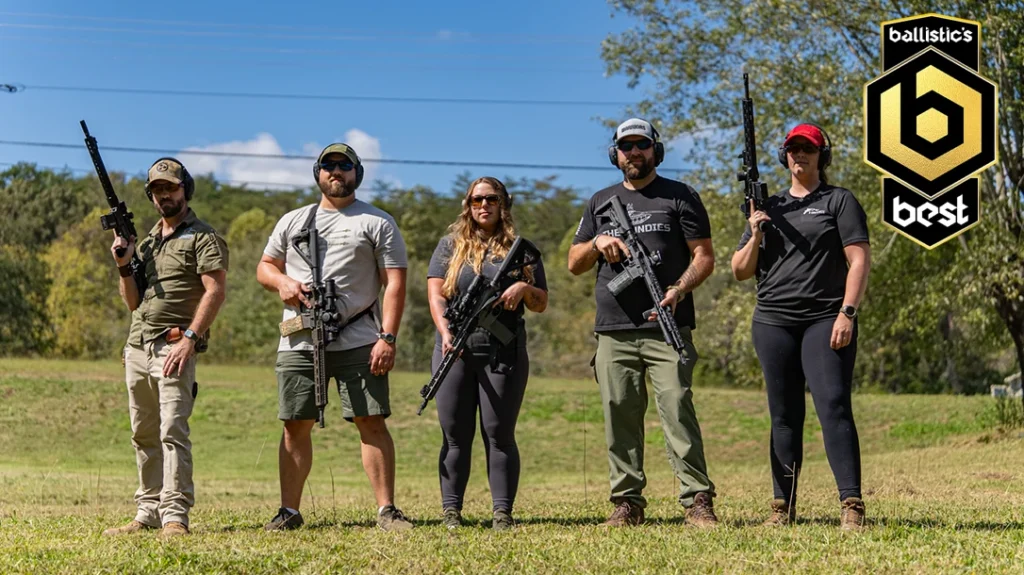Just like red dot sights on handguns, compensators are expanding beyond competition applications. As a result, they are becoming more prominent with personal defense weapons. For this reason, companies like DSC Gunworks are delivering compensated drop-in barrels for pistols like the Staccato C2.
The DSC Gunworks Drop-In Barrel for the Staccato C2
Why are compensators becoming so popular? Part of the challenge of using a handgun defensively/tactically involves controlling the muzzle flip. Muzzle flip reduces the speed you can fire multiple rounds where intended. Muzzle flip also causes the pistol frame to squirm in your hand—another detriment to performance.
No one is saying a 9MM needs a brake. However, controlling muzzle rise is a valid goal in keeping sights aligned on target. A compensator purposely channels ignition gasses upward when exiting the barrel, counteracting muzzle rise forces.
Advertisement — Continue Reading Below
Do not confuse a muzzle brake with a compensator. A muzzle brake deals more directly with recoil.
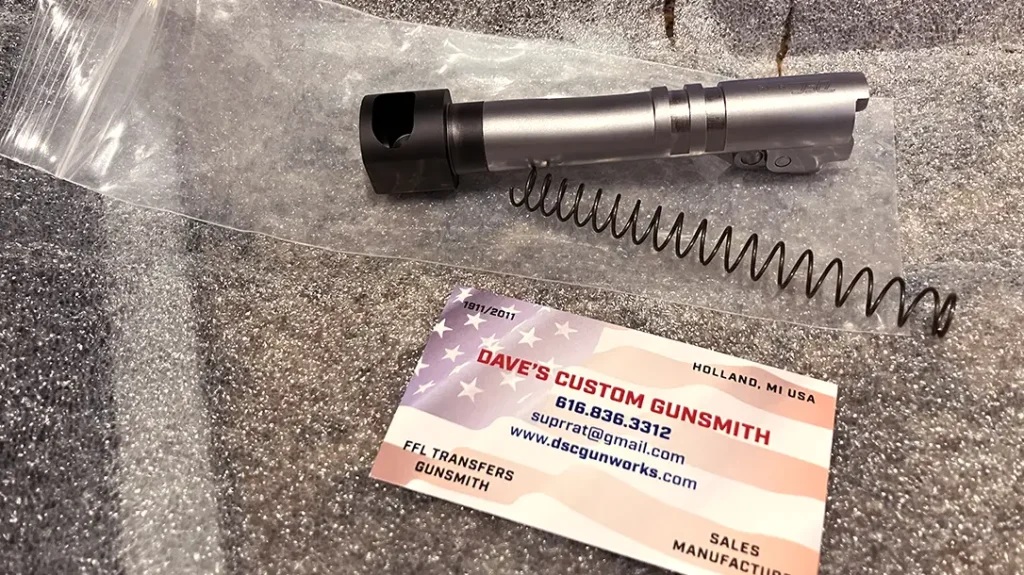
Storytime/Setting the Stage
Staccato has been at the forefront of modernizing the 1911 into forms not previously conceived. Competition was the initial drive for this.
Advertisement — Continue Reading Below
Staccato decided to focus on the tactical/personal defense arena based on experience garnered with previous STI Tactical models. The adaptation into the tactical realm—and name change to Staccato in May 2020—was and is based on a new leadership team featuring strong military/law enforcement backgrounds.
This was all foreshadowed when, in 2018, the US Marshal Service chose the 2011 STI Staccato 9MM for its elite SOG unit. Long Beach SWAT was another early convert to the Staccato 2011 9MM platform.
Staccato has honed its product catalog to include handguns that fulfill concealed carry, duty, tactical, and multipurpose roles. My experience with Staccato involves the XC and C2 models.
Advertisement — Continue Reading Below
The Staccato XC is a premium offering. It harkens back to the STI competition days with its performance level. However, the XC is all about real-world applications—albeit on the range for training, competition, and, most importantly, duty or personal defense roles.
Staccato’s commitment to tactical reliability stays in place with the XC, which features an integrated compensator. However, Staccato does not rely on it to define the XC experience.
The trigger is a work of art, and the balance allows for proper grip from the holster and natural point of aim. Staccato has also hand-fitted and tuned/timed the XC’s slide for efficiency. All descriptions, no matter my best efforts, fall short of conveying how smoothly the XC operates.
Advertisement — Continue Reading Below
The Staccato C2
The Staccato C2 is attractive for its blend of portability, capacity, reliability, controllability, and accuracy. These are poster child traits for a personal defense handgun. The Commander-length slide with a 3.9-inch barrel provides the optimum mix of performance via sight radius, concealment, and weapon balance.
My Staccato C2 was spec’d out to resemble the US Marshal SOG Unit variant with Leupold DeltaPoint Pro red dot mounted. Other performance-enhancing features include oversized ambidextrous thumb safeties, high-grip beavertail safety with a palm pad, and an extended ejector.
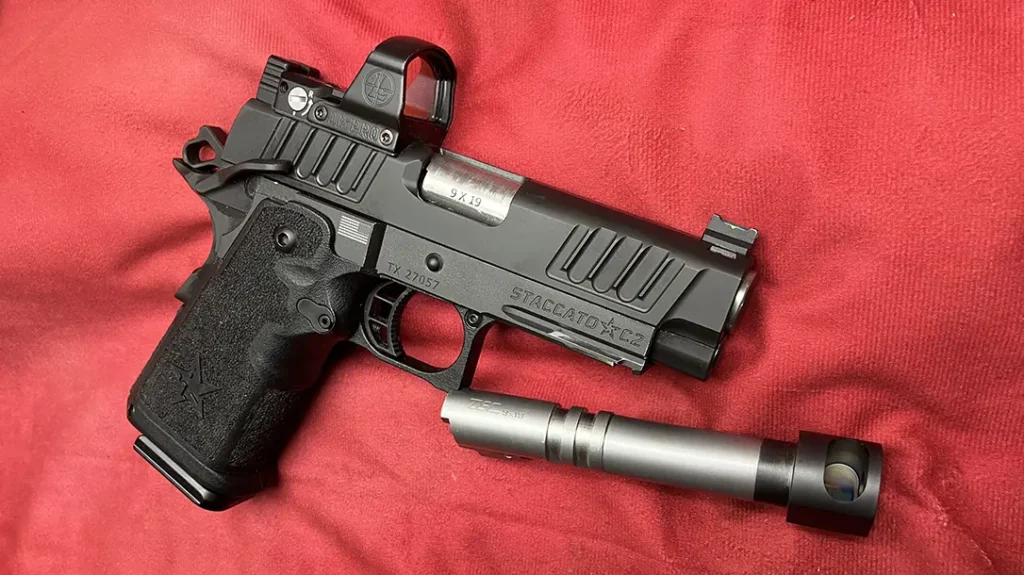
Advertisement — Continue Reading Below
The Staccato C2 weighs 25 ounces. The grip is made of a proprietary glass-filled polymer with side panels featuring a raised pattern design for texture. Staccato sagely decided to keep the 17-degree grip angle that the 1911 is renowned for.
However, the positives of the XC’s compensator experience had me wanting some of the same with the C2.
Installing the Drop-In Barrel in the Staccato C2
Research and colleague experiences led me to DSC Gunworks’s (DSC) drop-in barrel comp kit for the C2. Woah! A drop-in barrel that also sports a comp? Some will tell you that is not doable with a 1911/2011 handgun. I was one of those until my experience with the DSC Comp Kit.
Advertisement — Continue Reading Below
The DSC comp-to-slide interaction is not your typical screw-on comp arrangement. The DSC Comp Barrel Kit is one piece with the compensator permanently bonded/welded onto the barrel. So, the need to time/orientate and then secure a threaded-on compensator to a barrel is avoided. Likewise, for jurisdictions with ridiculous laws about threaded barrels, the DSC Comp barrel is good to go.
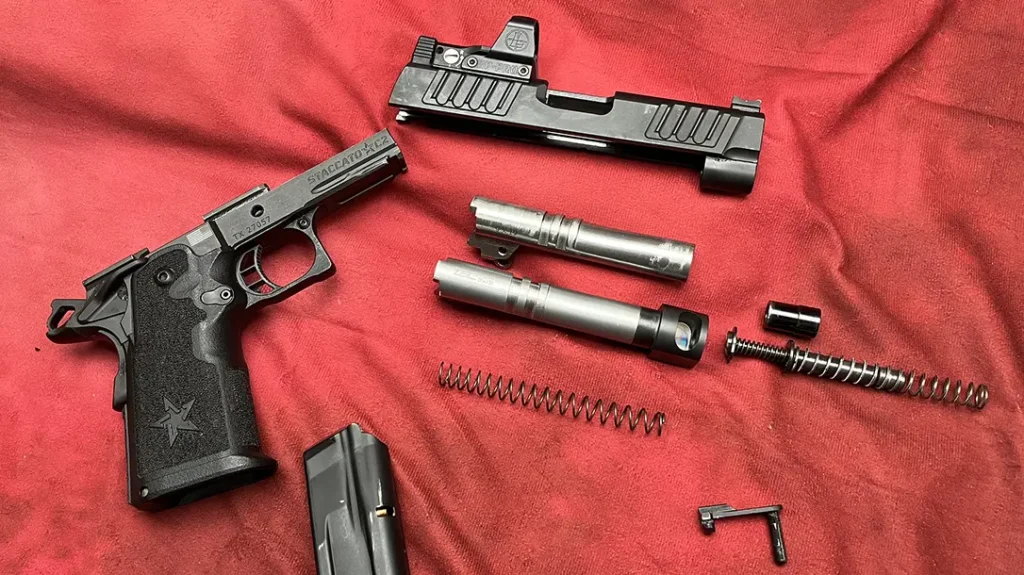
The single port comp adds only 3/4-inch to the overall length while staying within the profile of the slide. It provides a very clean aesthetic compared to some threaded-on compensators that appear to dangle off the front of a threaded barrel or swell outside the slide width.
Advertisement — Continue Reading Below
A significant benefit of this is that most holsters for the C2 can be used without issue. Another cheat code with holsters involving the C2 with DSC Comp is simply moving up to a Staccato P or XC model holster.
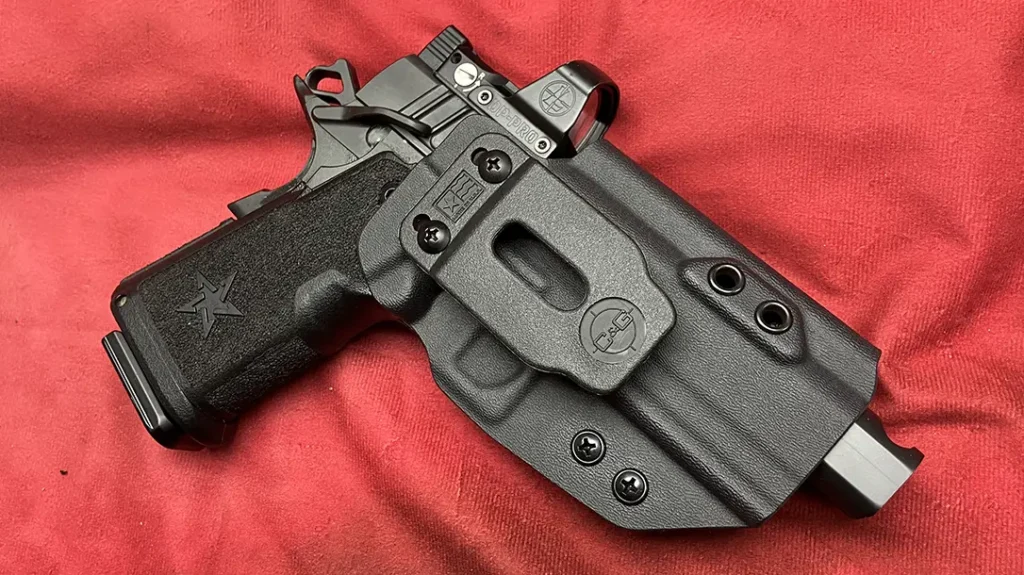
Installation was as simple as field stripping the C2 and then dropping in the DSC comp barrel and switching out the recoil spring to the lighter poundage one provided by DSC. The lighter spring is to balance the added weight and gas redirection from the compensator. This ensures optimal cycling reliability, reduced muzzle rise, and smoother operation.
Advertisement — Continue Reading Below
All of the literature/propaganda means nothing if C2 reliability is impacted with the DSC drop-in comp barrel or if no advantage is gained in terms of muzzle flip.
Performance of the DSC Gunworks Compensated Drop-In Barrel
Most literature on compensators indicates a 30%-40% reduction in muzzle flip. Testing protocols can be somewhat subjective. For this article, I fired various drills with the C2, with DSC comp barrel installed, alongside equivalent non-compensated 2011 handguns.
The Doubles Drill, one of my favorites, was especially informative when comparing what the DSC comped C2 provides. It starts from the low ready, NOT from the holster.
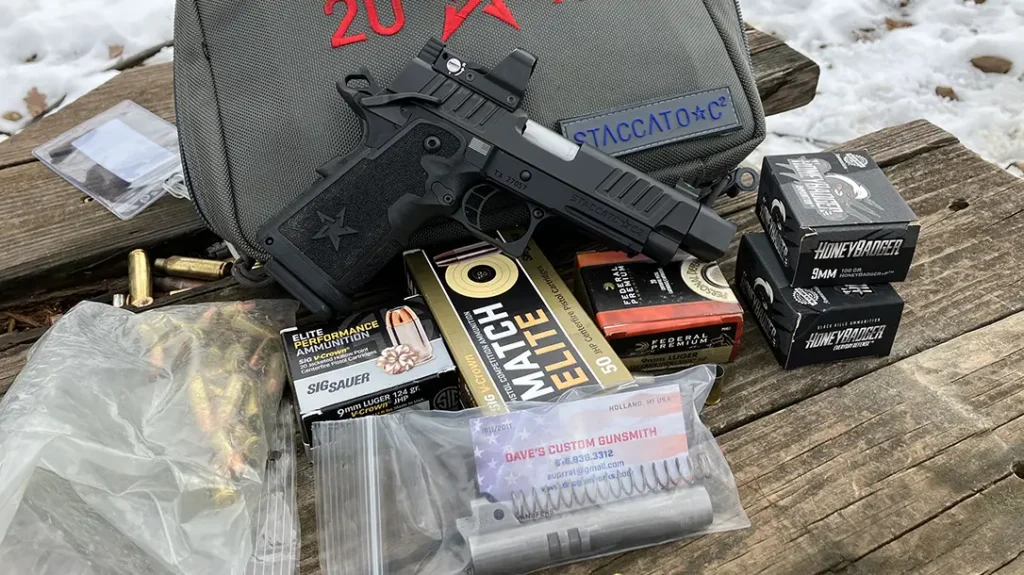
Commence with shooting pairs, pulling the trigger as fast as you can, with a second or so pause (the length of the pause isn’t important) between pairs. The pause is so you can track the pairs’ split times on your shot timer.
The goal on target is two rounds impacting close to each other. When pulling the trigger as fast as you can, problems with grip and muzzle flip control will show up, even at a short distance. Split times were tighter—.16-.18—while maintaining a similar shot pattern on target with the C2 DSC comp combo.
The Bill Drill is another informative drill involving rapid multiple shots. You start with the handgun in the holster with hands in “surrender” position at shoulder level. A target is placed 7 yards down range.
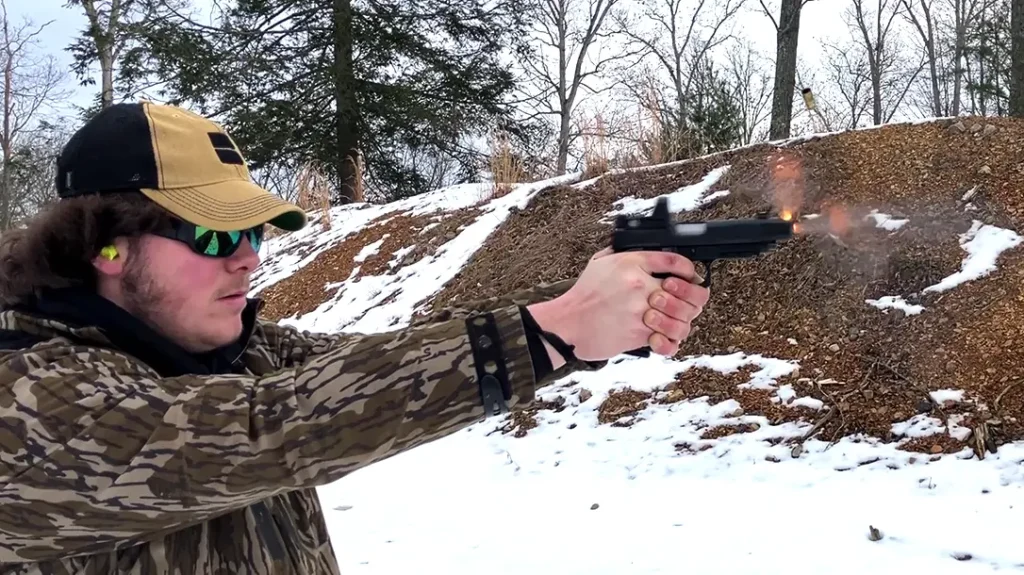
On command, draw and fire six rounds as rapidly as solid hits allow. Following your sights during recoil is crucial. When done properly, the red dot is never stationary. You just “ride” the recoil long enough to confirm the dot is back in the “A” zone and send another round into the target.
The C2 with DSC comp barrel allowed me solid Bill Drill times in the 2.1 to 2.3 second range. For what it is worth, my draw speed, as indicated with the first shot broke times, was not doing the C2 DSC comp combo any favors.
Compensated Barrels Offer a Distinct Advantage
I would offer that with the C2 with DSC comp barrel, the red dot sight was noticeably easier to track during recoil. Likewise, the slide cycle seemed “smoother.” All of this translates into a handgun that stacks rounds on top of each other in a hurry.
Installation was simple with the option of returning to your stock barrel if desired. The DSC comp won’t wiggle loose and requires no extra steps or drama for field stripping/cleaning the C2.
A compact handgun, such as the C2 stoked with full-power 9MM+P rounds, certainly benefits from the compensator for both experienced and novice shooters. Experienced shooters can run the weapon faster while maintaining accuracy. Similarly, novices are provided with a more controllable platform.
You cannot default into thinking it is only about the gear—no matter how nice the equipment is in the form of the Staccato C2 with DSC Comp barrel. Mindset and dedicated training are crucial. However, red dots are not going anywhere, and the same can be said for compensators.
I urge readers to check out DSC Gunworks. They offer a full range of 2011 services, not just the drop-in comp barrel kit featured herein.
For more information, please visit DSCGunworks.com.
